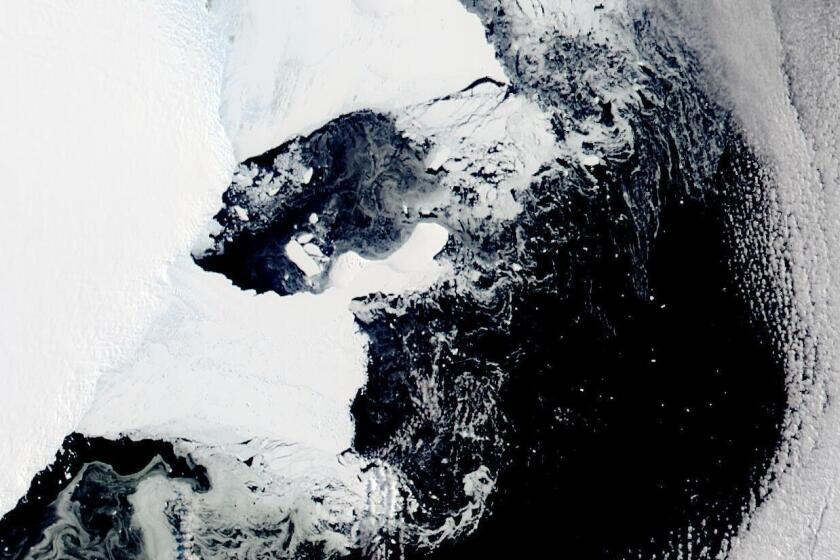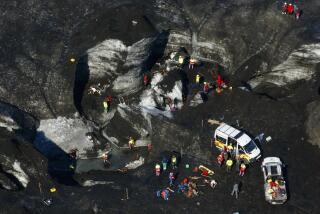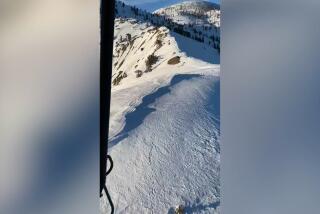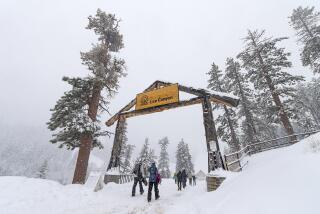Body parts, hiking gear found on Italian glacier after avalanche that killed 7
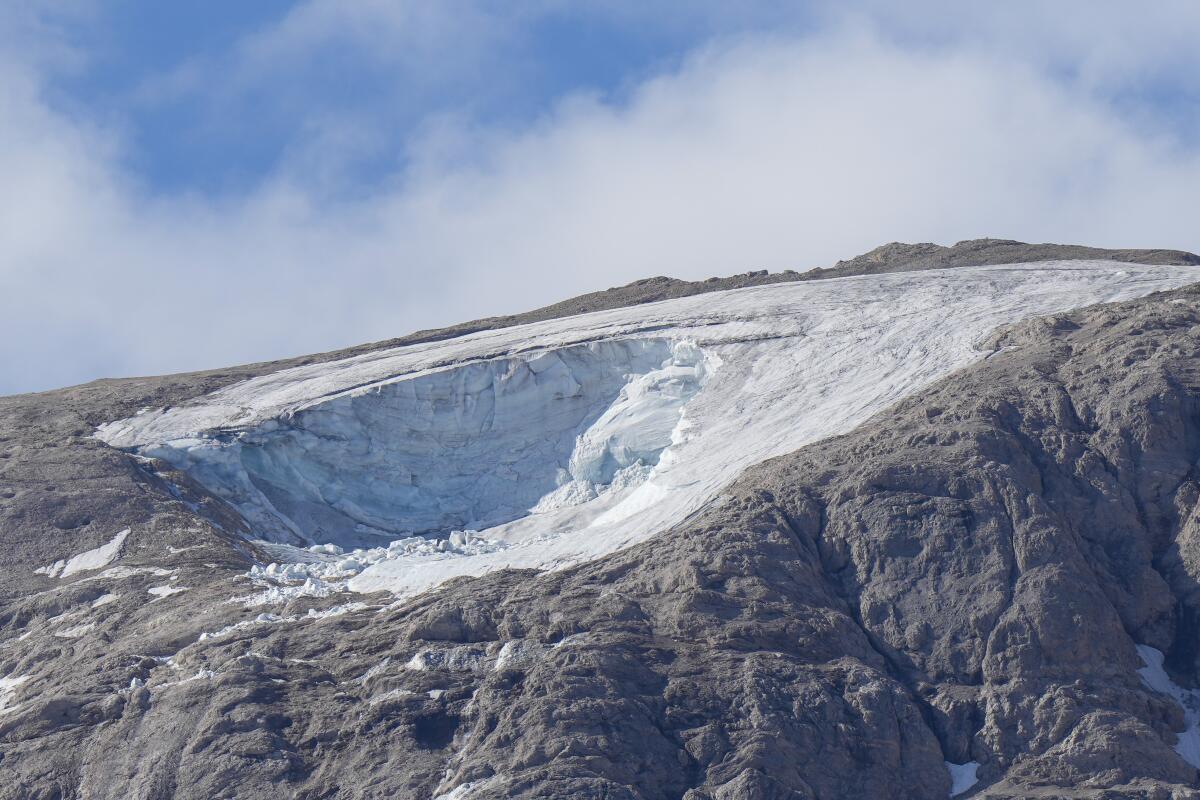
- Share via
CANAZEI, Italy — Rescuers found body parts and equipment as they searched Tuesday for hikers missing after a powerful avalanche on a glacier that killed at least seven people and that is being blamed in large part on global warming.
Officials initially feared that 13 hikers were still missing, but the province of Trento on Tuesday reduced the number of people unaccounted for to five, after eight others checked in with authorities.
After rain hampered the search Monday, sunny weather Tuesday allowed helicopters to bring more rescue teams up to the site on the Marmolada glacier, east of Bolzano in the Dolomites mountain range, even as hopes dimmed of finding anyone alive.
A huge chunk of the glacier cleaved off Sunday, triggering an avalanche that sent cascades of ice, rock and debris down the mountainside onto unsuspecting hikers below. At least seven people were killed, officials said.
“We have to be clear, finding someone alive with this type of event is a very remote possibility — very remote — because the mechanical action of this type of avalanche has a very big impact on people,” said Alex Barattin of the Alpine Rescue Service.
Nicola Casagli, a geologist and avalanche expert at the University of Florence, said the impact of the glacier collapse on the hikers was greater than a mere snow avalanche and would have taken them completely by surprise.
Scientists are concerned because an ice shelf the size of New York City collapsed in East Antarctica, an area that had long been thought to be stable.
“These types of events, which are ice and debris avalanches, are impulsive, rapid, unpredictable phenomena, reaching very high speeds and involving large masses,” he said. “And there is no chance of getting to safety or perceiving the problem in advance, because by the time you perceive it, you’ve already been hit.”
A photo taken by the Associated Press during a helicopter survey of the site showed a gaping hole in the glacier that looked as though it had been carved out of the blue-gray ice by a giant ice cream scooper.
The terrain is still so unstable that rescue crews were staying off to the side and using drones to try to find any survivors while helicopters searched overhead, some using equipment to detect cellphone pings. Two rescuers remained on site overnight and were joined by more rescuers Tuesday morning.
Maurizio Dellantonio, national president of the Alpine Rescue Service, said teams had found body parts, hiking equipment and clothing on the surface of the debris, evidence of the avalanche’s powerful impact.
“We have recovered so many fragments over the last two days. They are very painful for those who pick them up, and then for those who have to analyze them,” he said. “Personally I can only think that what we found on the surface will be the same that we will find underneath, when the ice will melt or by digging, if there is a chance.”
Officials closed all access routes and chair lifts to the glacier for hikers, fearing continued instability and the potential that more chunks of ice might detach.
Toward a more sustainable California
Get Boiling Point, our newsletter exploring climate change, energy and the environment, and become part of the conversation — and the solution.
You may occasionally receive promotional content from the Los Angeles Times.
Prime Minister Mario Draghi, who visited the rescue base in Canazei on Monday, said that avalanches were unpredictable but that the tragedy “certainly depends on the deterioration of the climate situation.”
Italy is in the midst of an early summer heat wave, coupled with the worst drought in northern Italy in 70 years. Experts say there was unusually little snowfall during the winter, exposing the glaciers of the Italian Alps more to the summer heat and melt.
“We are thus in the worst conditions for a detachment of this kind, when there’s so much heat and so much water running at the base,” said Renato Colucci of the Institute of Polar Sciences of the state-run Council for National Research. “We aren’t yet able to understand if it was a deep or superficial detachment, but the size of it seems very big, judging from the preliminary images and information received.”
The Council for National Research has estimated that the Marmolada glacier could disappear entirely in the next 25 to 30 years if current climatic trends continue, given that it lost 30% of its volume and 22% of its area from 2004 to 2015.
Casagli said that what happened on the Marmolada was unusual, but that such destructive avalanches will become more frequent as global temperatures rise.
“The fact that it happened in a scorching summer with abnormal temperatures must be a wakeup call to understand that these phenomena, while rare, are possible,” he told reporters. “If we don’t take decisive measures to counter the effects of climate change, they will become more and more frequent.”
More to Read
Sign up for Essential California
The most important California stories and recommendations in your inbox every morning.
You may occasionally receive promotional content from the Los Angeles Times.
